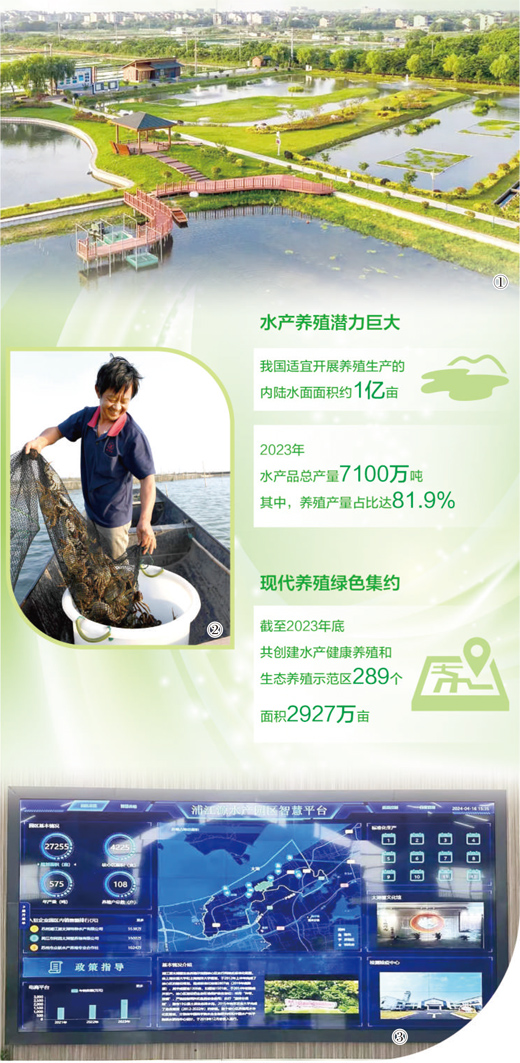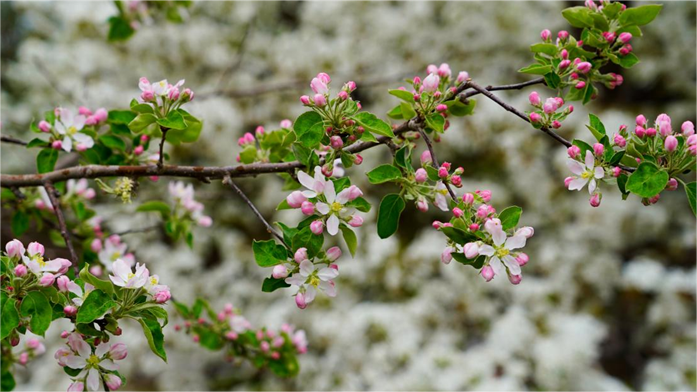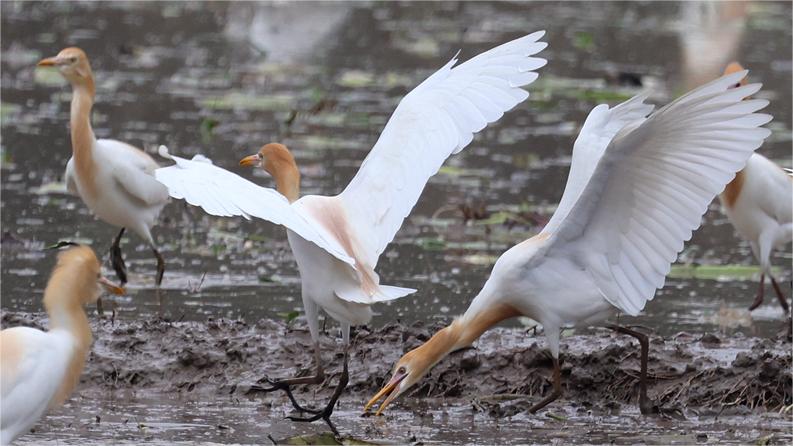Eco-friendly crab breeding demonstration park in China's Suzhou realizes zero tailwater discharge

① Photo shows aquaculture tailwater purification ponds at an eco-friendly crab breeding demonstration park in Qidu township, Wujiang district, Suzhou city, east China's Jiangsu Province. (Photo/Pan Lan)
② A farmer harvests crabs at an eco-friendly crab breeding demonstration park in Qidu township, Wujiang district, Suzhou city, east China's Jiangsu Province. (Photo/Wu Qixuan)
③ Photo shows the smart platform of an eco-friendly crab breeding demonstration park in Qidu township, Wujiang district, Suzhou city, east China's Jiangsu Province. (Photo/Shen Mengyi)
Suzhou city in east China's Jiangsu Province has built an eco-friendly crab breeding demonstration park for the standardized breeding of crabs, achieving zero discharge of aquaculture tailwater.
With a core area of 4,225 mu (about 281.67 hectares), the demonstration park, located near Taihu Lake in Qidu township, Wujiang district has realized efficient and eco-friendly crab farming.
Zhang Jianliang, a 53-year-old crab farmer in Ronglan village, Qidu township, has been engaged in crab farming for over 20 years. Several years ago, he contracted 100 mu of crab breeding ponds at the demonstration park.
"Crab farming here is tech-driven, which is completely different from in the past," Zhang said.
Zhang introduced an automatic control system for aquaculture supported by Internet of Things (IoT) technology at the demonstration park.
"The biggest concern in crab farming is low dissolved oxygen levels in water, which was previously assessed based on experience," Zhang said, noting that now, real-time parameters like dissolved oxygen, pH value, and water temperature are displayed on an electronic screen.
For instance, the system automatically analyzes real-time data collected by sensors under the water surface, and will turn on the oxygenation equipment to prevent hypoxia in water if data falls below the preset "red line."
In addition, unmanned automatic feeding boats, and IoT-based facilities in water make crab farming more efficient.
The demonstration park has invited experts from agricultural universities and companies to provide on-site training on breeding techniques for farmers, according to Cao Jianzhong, who is in charge of the demonstration park.
Under the experts' guidance, Zhang has adopted a shrimp-crab co-culture mode, which increases the output value per mu by over 2,000 yuan (about $276.19).
"Technological methods have made oxygenation and feeding more precise, saved labor costs, and boosted farmers' confidence," Zhang said, adding that thanks to the standardized breeding in the demonstration park, he can earn 200,000 to 300,000 yuan a year.
The demonstration park has an overall planned area of 27,255 mu, and its total annual output value reaches approximately 400 million yuan.
In addition, the demonstration park adopts an eco-friendly aquaculture tailwater treatment system designed by the Institute of Hydrobiology under the Chinese Academy of Sciences, according to Xi Bin, a manager at the demonstration park.
The treated tailwater can reach the required standard and flow back into crab ponds through an extensive network of pipes, which means that it will not be discharged into Taihu Lake, Xi said.
The demonstration park boasts three aquaculture tailwater purification zones covering an area of 362 mu, which can purify 500 cubic meters of tailwater per hour.
To provide comprehensive support services to crab farmers, the demonstration park has deployed technologies such as IoT, cloud computing, and big data to ensure intelligent farming.
It has a smart platform that integrates functions like an overview of the park, smart aquaculture, quality control, and daily management and serves as a "smart brain."
Shen Mengyi, a staff member at the demonstration park, said that various sensors are deployed in the park’s crab ponds, providing data support for science-based aquaculture.
The demonstration park also leverages various types of automated equipment in its logistics and distribution center and guides farmers and rural entrepreneurs to increase their incomes by adopting a model for the production, supply and sales of crabs.
Zhu Changnan, a 63-year-old crab farmer in Qidu township, and his youngest son are engaged in e-commerce in the demonstration park. Their annual e-commerce sales volume exceeds 20 million yuan, compared to 300,000 to 400,000 yuan before they moved their business to the park.
Photos
Related Stories
- Aquaculture thrives on edge of Tengger Desert in NW China's Gansu
- Fish farm develops into tourist hotspot in exploration of modern aquaculture
- Intelligent semi-submersible aquaculture platform self-sufficient in green energy
- Small seafood grows into prosperous industry in E China’s Zhejiang
- Tailwater recycling saves cost, boosts production of aquaculture
- China turns surrounding sea waters into “blue storehouses” of life through marine ranches
Copyright © 2024 People's Daily Online. All Rights Reserved.









